good pink rose for a small border
Jim Reichert
8 years ago
Featured Answer
Sort by:Oldest
Comments (68)
jerijen
8 years agoluxrosa
8 years agoRelated Discussions
Please recommend mid-size pink/dark pink old rose look shrub
Comments (15)I would recommend Gertrude Jekyll for colder zones. It is very hardy. I don't have too much trouble with blackspot in my no spray zone 5a garden although Lady Emma Hamilton sure gets some. Mary Rose is also good. Rugosa roses such as Pierette Pavement or Foxy Pavement are another alternative. Hardy Buck roses like Earth Song or Country Dancer are also hardy and disease resistant but, like rugosas, do not have old fashioned bloom form. Easy Elegance roses are also disease resistant....See MoreFlower Carpet rose border - best cominations? (border pic)
Comments (18)Paso, I would say don't be too concerned. Whenever designing either you either stick with masses of standard colors for strong statement in simplicity or you mix in a haromony other colors. There are so many ways to design its limitless. Personal taste will be different among anyone as well. Masses of reds are done all the time with roses around my area and done quite effectively. The trick is to use other plants in the areas you have left that will compliment in color the house and roses but will not replicate either of them. Use blue foliage or dark foliage plants. Ornamental grasses can help well because there are many blue colored ones that will also add a relaxed textural beauty to the rigid mass of red. A Russian sage has bluish foliage and blue flowers and mixes well with red rose masses. I don't know your zone but you could even plant white variegated miscanthus such as Rigoletto to offet the colors. You need bold to go with the bold, don't mix too many colors in remaining areas you have left or they will be lost and clash against the roses. good luck!...See MoreBest unfading pink rose and yellow rose
Comments (22)Hi Sue I'm trying to think of a pink that doesn't fade in Melbourne, but there are few. Probably Flamingo and Queen Elizabeth are closest, but both grow very tall in my garden. The Childrens Rose is a pale pink to begin with, but doesn't fade. Gertrude Jeckyll doesn't fade and has a great perfume, but she''s not to everyone's taste. Gold Bunny and Friesia are very popular yellows here, but I can't vouch for their colourfastness. All those are readily available in Eastern Australia. Isn't our limited range of roses a pain? Sue...See Moreclearing a small woodland border
Comments (14)Thanks for the comments this past winter. I didn't see them. Well ... the project looks a lot different now. A 60' pondless water stream is on the hillside with several terraces build with sandstone. It is about 90% complete. Trees went in as the terraces were built. It was the easiest way. The trees are a nice red oak, a couple of green mountain maple, a red maple, 3 serviceberries, and several cloud 9 dogwoods. There are no shrubs, perennials, or groundcover yet. At this point, I need to call the landscaper to come in and finish up. Reinstall the pump, finish the with the sandstone work, and repair the yard. From there on out I'm going to try to do my own plantings, over time. I'll try to post some pics of this work in progress. Right now? I don't know what to think. Dumb idea to do it at all? Maybe I had a brain fart. I cannot quibble with the work the landscaper did. I KNOW that they gave me the best job that they could do. And so, what more can you ask than that? My "job" that I self imposed was to stay out of their way. Ya know? I know that they were very pleased with the result. They said that each pondless stream project takes on a personality of its own. They like this project a LOT. I plan to use local nurseries, rare find nursery (online), saved volunteers, ground layer propogation, and starts from friends going forward. Oh. And the white pine volunteers? turns out they were red pine. Also a native pine. Who knew? We moved it into the woods on the neighbors property. The rest were lost. So, I'll be looking for more red pine volunteers. I thought we had destroyed a very little stand of jack in the pulpits. I couldn't find them in the fall to save them. And low and behold, I saw one a few yards away today. Yeah. I will try to post some pics soon. I've forgotten exactly how to do that now. But I'll figure that out or make a phone call. Re all the hemlock? Yes. There are about 15 in the background planting. To diversify? I could use some more white pine or red pine if more are needed. I'd really like to stick with natives re pines. Re black cherries. Yes. I know that they are not desirable trees. Many have been removed over the years as well as many other junk trees. The black cherry at the top of the hill though? almost has to stay. At least, it's away from the house. And, it's mature with a decent trunk and shape. ML...See MoreUser
8 years agoAquaEyes 7a NJ
8 years agolast modified: 8 years agonikthegreek
8 years agojerijen
8 years agomonarda_gw
8 years agolast modified: 8 years agomonarda_gw
8 years agohoovb zone 9 sunset 23
8 years agonikthegreek
8 years agolast modified: 8 years agoUser
8 years agomariannese
8 years agotitian1 10b Sydney
8 years agotuderte
8 years agoplectrudis (Zone 8b Central TX)
8 years agotitian1 10b Sydney
8 years agoJim Reichert
8 years agoUser
8 years agoJim Reichert
8 years agoLynn-in-TX-Z8b- Austin Area/Hill Country
8 years agolast modified: 8 years agoJim Reichert thanked Lynn-in-TX-Z8b- Austin Area/Hill CountryJim Reichert
8 years agoJim Reichert
8 years agoJim Reichert
8 years agojerijen
8 years agoJim Reichert
8 years agoJim Reichert
8 years agoJim Reichert
8 years agoJim Reichert
8 years agoingrid_vc so. CA zone 9
8 years agojerijen
8 years agonanadollZ7 SWIdaho
8 years agonanadollZ7 SWIdaho
8 years agoashrosetx
8 years agokittymoonbeam
8 years agoLynn-in-TX-Z8b- Austin Area/Hill Country
8 years agoingrid_vc so. CA zone 9
8 years agonanadollZ7 SWIdaho
8 years agoNinkasi
8 years agoRosefolly
8 years agolast modified: 8 years agonanadollZ7 SWIdaho
8 years ago
Related Stories
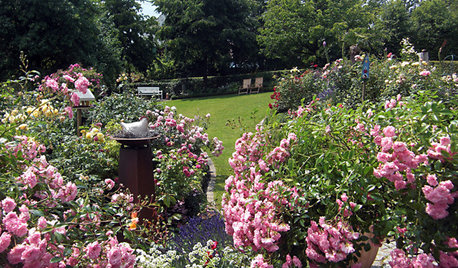
GARDENING GUIDES5 Sweet to Spirited Pink Roses for an Enchanting Garden
Whether you go demure or daring, there's a pink rose here to make you flush with garden pride
Full Story
PLANTING IDEASGreat Garden Combo: Rose + Clematis for Small-Space Impact
We all need somebody to lean on. And when a rose supports a climbing vine, the results can totally transform a small garden
Full Story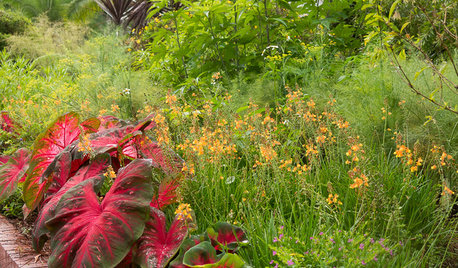
PLANTING IDEASGreat Garden Combo: Tropical Beauties for a Sun-Drenched Border
These standouts hold up in drought, heat and humidity — and their good looks hold up to scrutiny
Full Story
MOST POPULARHomeowners Give the Pink Sink Some Love
When it comes to pastel sinks in a vintage bath, some people love ’em and leave ’em. Would you?
Full Story
GARDENING GUIDES9 Low-Growing Hedges That Make Good Neighbors
Define garden areas or borders without blocking the view, with these evergreen shrubs that take kindly to trimming
Full Story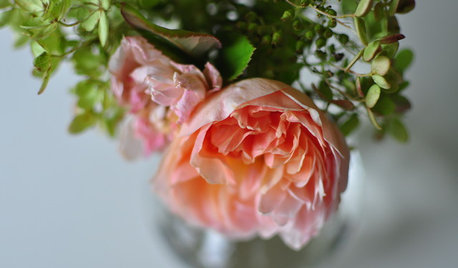
GARDENING GUIDESRoses: Crowning Touch of Gardens
Whether you're the Miss or Mister America of gardening or take a hands-off approach, roses can be a winning addition to your landscape
Full Story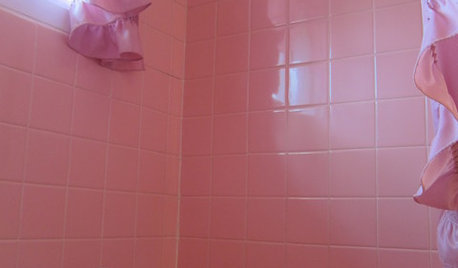
BATHROOM DESIGNTickled Pink in the Bathroom
We asked you to show us your vintage pastel bathrooms — and you responded with a tsunami of photos and comments
Full Story
COLORBathed in Color: When to Use Pink in the Bath
Even a sophisticated master bath deserves a rosy outlook. Here's how to do pink with a grown-up edge
Full Story
GARDENING GUIDESWhat Kind of Roses Should You Grow?
Want to add the beauty of roses to your garden? Find out which ones, from old-fashioned to modern, are right for you
Full Story
GARDENING GUIDES6 Captivating Roses for an Alluringly Fragrant Garden
Perfume your garden with aromas from richly spicy to lightly sweet, without sacrificing an inch of color
Full Story


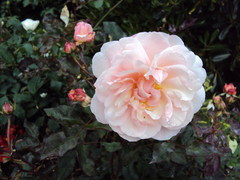
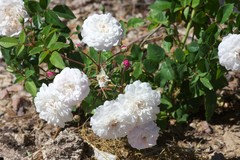
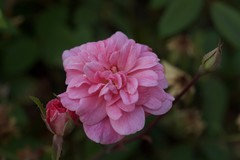

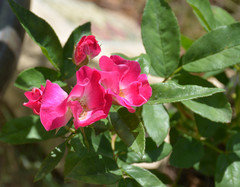
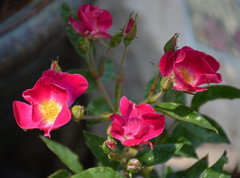
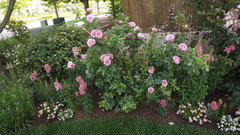
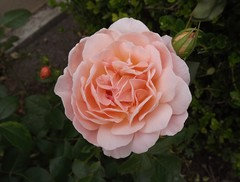




jerijen